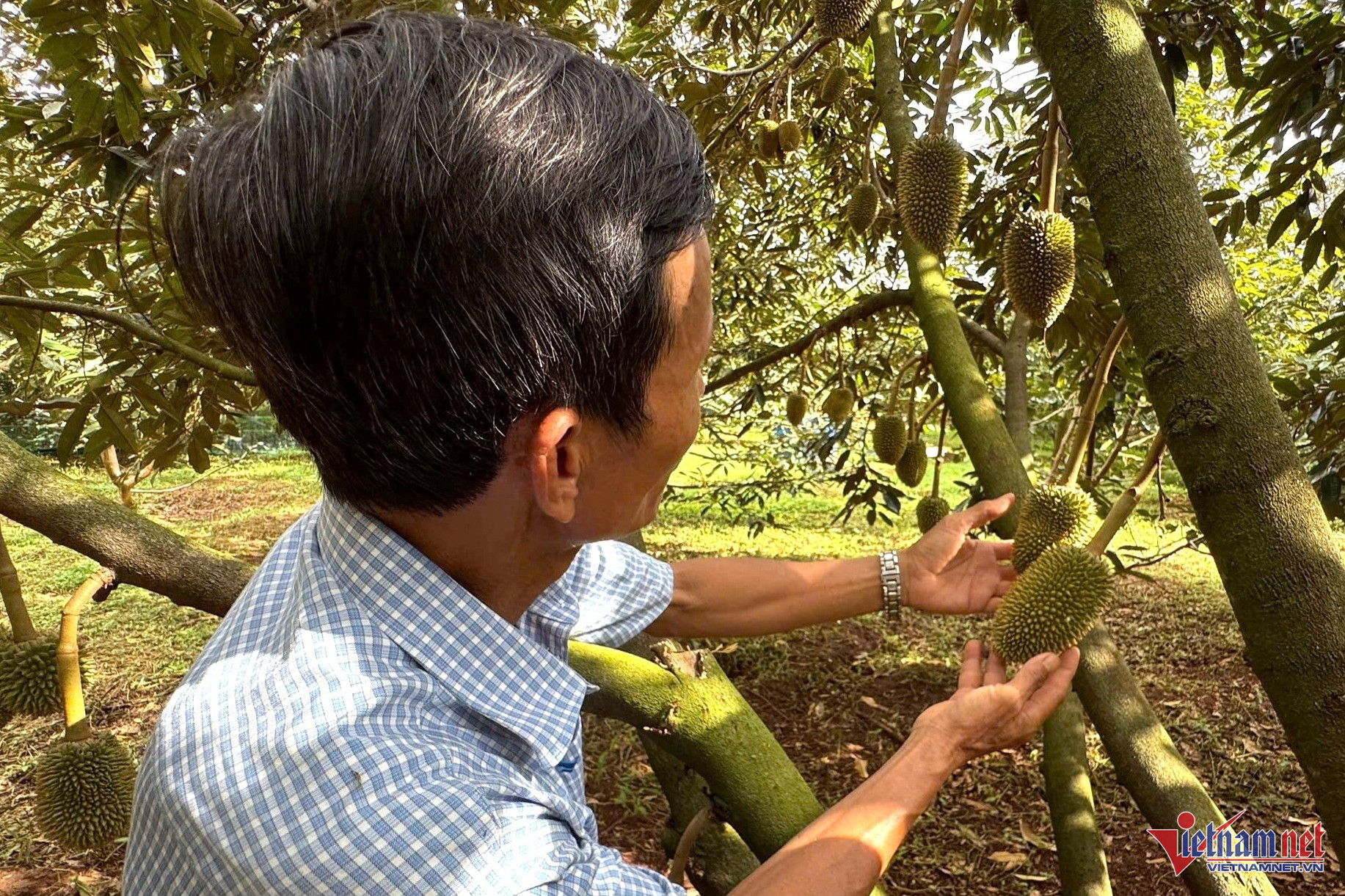Speaking to VietNamNet on May 24, Nguyen Thien Van, Acting Chairman of the Dak Lak People's Committee, confirmed that the province has raised concerns about challenges in durian cultivation, processing, and export.
Dak Lak has formally requested the Ministry to instruct its specialized departments to develop new policies encouraging organizations and individuals to produce or import safer ripening agents, preservatives, and color enhancers for durian, in the shortest possible time.
The province also proposed establishing localized Food Safety Testing Centers, Phytosanitary Centers, and Irradiation Facilities in Dak Lak to monitor residue levels and quarantine issues directly at the source.
Since late 2024, Chinese authorities have detected cadmium and auramine O in some shipments of Vietnamese durians. Dozens of planting area codes were revoked - many from Tien Giang Province.
China's customs authority now requires 100% of Vietnamese durian shipments to include test results for cadmium and auramine O. If residues are detected, related planting codes and packaging facilities will be suspended from exporting.
Vietnam currently exports fresh durian to 22 countries and territories and frozen durian to 23 markets. The top markets include China, Taiwan (China), Hong Kong (China), Japan, and the United States - with China being the largest importer by far.
In 2024, Vietnam’s durian exports reached USD 3.3 billion. The country now has approximately 179,000 hectares of durian plantations, yielding about 1.6 million tons annually. Dak Lak, with 38,000 hectares and 360,000 tons in yield, leads the nation in production.
To date, Dak Lak has been issued 68 planting area codes, 24 fresh durian packing codes, and 11 frozen durian packing facility codes.
As of May 20, China’s General Administration of Customs approved an additional 200 planting area codes and 15 packing facilities for Dak Lak. This brings the province’s total to 268 approved planting zones and 39 certified packing houses, covering approximately 7,500 hectares.
Hai Duong
